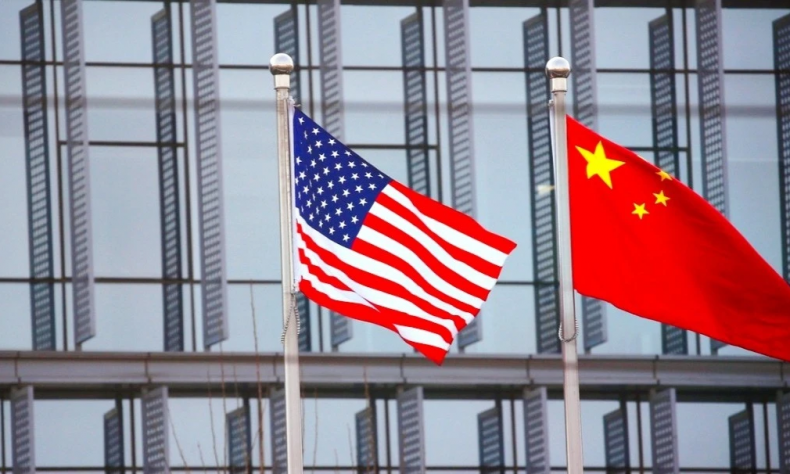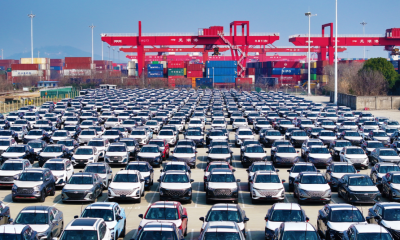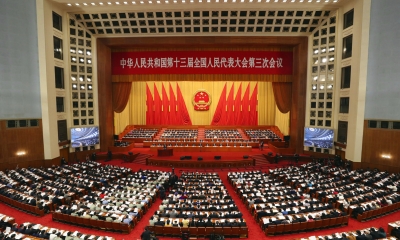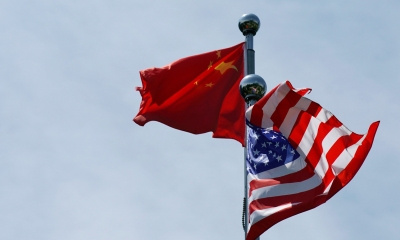Progress Towards a Mutually Beneficial China-U.S. Trade Framework

The two countries can help lift bilateral trade from its current lows to new heights, benefiting not only both nations but also the global economy as a whole.
China and the United States concluded a two-day round of trade talks in Kuala Lumpur, Malaysia, on October 26, achieving results that exceeded expectations. The discussions were described as candid, in-depth, and constructive. Both sides reached a preliminary framework agreement covering key issues in bilateral trade, including China’s export controls of rare earths, U.S. restrictions on high-tech products, tariffs, fentanyl, trade expansion, particularly soybeans, and, port fees.
The outcome stood in sharp contrast to the escalating tensions leading up to the meeting. News of the progress gave a strong boost to financial markets in both countries. On October 28, the Shanghai Composite Index broke through 4,000 points for the first time in a decade. The Dow Jones Industrial Average rose by 337.47, or up 0.71 percent. NASDAQ and S&P 500 gained 1.86 percent and 1.23 percent, respectively.
How were China and the U.S., once locked in such intense friction, able to reach a framework agreement on so many contentious issues in just two days? The fundamental reason lies in the clear strategic and political direction set by Chinese President Xi Jinping and U.S. President Donald Trump. During their last phone call on September 19, President Xi Jinping recalled that China and the U.S. were allies during World War II, stressing that the two nations can achieve mutual success and shared prosperity that benefits both countries and the world.
President Trump expressed his hope to promote deeper trade cooperation between the two sides. Following that call, the negotiating teams from both countries acted on the leaders’ instructions. The talks were guided by the principles of equality and mutual respect, with neither side seeking to impose its will on the other. Instead, both sides addressed each other’s major concerns and worked to find solutions acceptable to both. Regarding rare earths, China fully considered the needs of U.S. customers who use these materials for civilian purposes.
Both countries agreed to strengthen cooperation to prevent the smuggling of fentanyl into the U.S., and Washington is expected to lift the fentanyl-related tariffs on Chinese goods. The two sides also discussed postponing the so-called “reciprocal tariff”, while the U.S. dropped it’s earlier threat to impose a 100 percent tariff. They further explored ways to expand bilateral trade, including increasing U.S. soybean exports to China and addressing port fee issue.
The Kuala Lumpur talks demonstrated that when both countries share a genuine desire for a stable and constructive relationship, rather than a zero-sum confrontation, they can find ways to resolve even the toughest trade disputes. The foundation lies in peaceful co-existence, equality, and mutual respect. Both sides should continue to handle differences constructively, acknowledge each other’s legitimate concerns, and seek practical solutions.

China and the U.S. are the world two largest economies and share extensive common interests. According to China customs data, bilateral trade in goods reached 688.28 billion U.S. dollars in 2024, 275 times the level of 1979 when both countries established diplomatic relations. Since China acceded to the WTO, U.S. exports to China have grown by 648.4 percent, compared with 183.1 percent worldwide.
According to the U.S.-China Business Council, U.S. exports to China supported around 930,000 American jobs in 2022. Official U.S. data also shows that American companies operating in China generated 490.5 billion dollars in 2022, roughly three times the value of American exports to China. Both countries have therefore benefited enormously from this trade relationship.
Washington’s unilateral tariffs on imports have largely caused the current difficulties and tensions. The average tariff rate on Chinese goods stands at about 47 percent, including 10 percent general tariff, 20 percent fentanyl-related tariff, and 17 percent tariff during Trump’s first term. An additional 24 percent “reciprocal tariff” remains temporarily suspended but not fully lifted. These high tariffs have created serious challenges for bilateral trade. According to China customs data, in the first 9 months of 2025, China’s exports to the U.S. fell by 16.9 percent year-on-year, while its imports from the U.S. declined by 11.6 percent.
However, data show that the tariffs have had little effect on China’s global trade performance. During the same period, China’s global exports grew by 6.1 percent year-on-year, accelerating from 5.9 percent in 2024, before the latest U.S. tariffs were imposed.
Nor have the tariffs benefited the U.S. economy. Research by Goldman Sachs found that 86 percent of the tariff costs have been borne by American businesses and consumers, leading to higher inflation, lower household income and reduced business investment. Official U.S. data show that the Consumer Price Index rose to 3.0 percent in September 2025 after remaining around 2 percent for more than a year, while the unemployment rate climbed to 4.3 percent in August. A report by the U.S. Congress Joint Economic Committee estimated that tariffs could lead to a 13 percent annual drop in manufacturing investment through 2029, resulting in total losses of up to 490 billion dollars.
The conclusion is clear: removing the tariffs and returning to pre-tariff conditions would help restore the mutually beneficial trade relationship between China and the United States.
Chinese President Xi Jinping and U.S. President Trump will meet on October 30, on the sidelines of the APEC Summit in South Korea. It is widely expected that both leaders will reaffirm their determination to maintain a stable and constructive bilateral relationship.
As the world economy enters a new era driven by artificial intelligence, quantum computing, and green development, with China and the U.S. leading the way, there are vast opportunities for cooperation in the coming decades. By managing their differences and pursuing shared interests, the two countries, along with their businesses and citizens, can help lift bilateral trade from its current lows to new heights, benefiting not only both nations but also the global economy as a whole.
The article reflects the author’s opinions, and not necessarily the views of China Focus.
 Facebook
Facebook
 Twitter
Twitter
 Linkedin
Linkedin
 Google +
Google +







